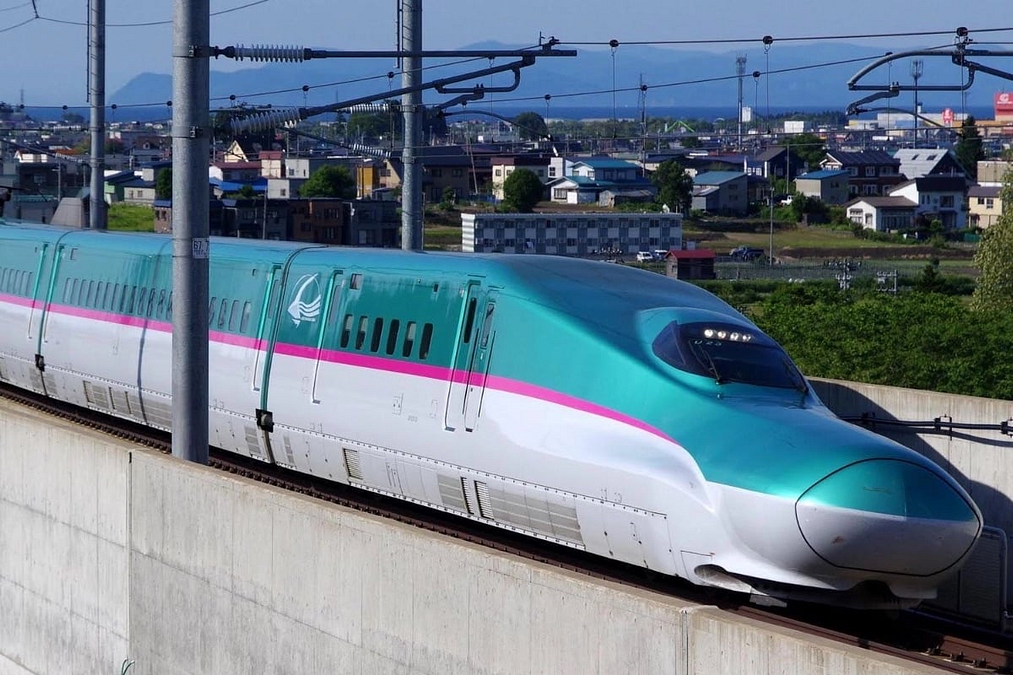Surat, the diamond city of Gujarat, has carved a new place for itself on India’s high-speed rail map as the country’s first bullet train station nears completion.
Officials associated with the project confirmed over the weekend that civil work on the Surat station, a critical hub on the ambitious Mumbai-Ahmedabad High-Speed Rail Corridor, is almost finished. The announcement signals that trial runs for India’s first bullet train are likely to begin in 2026, with full operations expected to commence by 2029.The National High Speed Rail Corporation Limited (NHSRCL), the implementing agency behind the project, has confirmed substantial progress. Over 300 km of viaducts, or elevated rail structures, are now in place along the 508-km corridor. This includes a 40-metre-long girder recently launched near Surat, further demonstrating India’s fast-evolving engineering prowess in high-speed rail infrastructure.
According to government officials, more than 250 km of the superstructure has been constructed using the Full Span Launching Method—a technique that allows for faster and safer installation of long girders. The corridor also includes 14 river bridges and nearly 40 km of other advanced construction such as steel and PSC (pre-stressed concrete) bridges, along with foundational work for stations. The execution of these works not only represents the scale of the project but underlines India’s growing self-reliance in critical transport infrastructure.Backed by technical and financial support from the Japanese government under a special bilateral agreement, this corridor marks India’s entry into the global league of nations with operational bullet train systems. Experts say this project is more than just a transport solution—it is a showcase of India’s aspiration to adopt greener, faster, and more efficient rail travel.
The bullet train will run at a top speed of 320 km per hour, connecting Mumbai and Ahmedabad in just about two hours, slashing travel time from the current six to seven hours. With a stop at Surat, the station is expected to become a significant transit point, boosting both passenger mobility and economic activity in southern Gujarat.The entire corridor is being developed at an estimated cost of ₹1.08 lakh crore. Of this, the central government will contribute ₹10,000 crore, while Gujarat and Maharashtra will share ₹5,000 crore each. The rest of the funding is being managed through a soft loan from Japan. The fiscal structure of the project aims to minimise debt burdens while maximising long-term social and economic benefits.
Environmental analysts note that the bullet train corridor aligns with India’s commitment to zero-emission mobility, especially as the trains are expected to be powered by electricity and significantly reduce the reliance on fossil fuel-based travel between the two megacities. In the long run, the project is expected to reduce aviation-related emissions on the Mumbai-Ahmedabad corridor and serve as a blueprint for future low-carbon transport infrastructure.The station design itself is tailored for future-ready, inclusive urban growth. According to planners, Surat’s bullet train station incorporates features for differently-abled commuters, multi-modal connectivity with buses and metro services, and adequate solar integration to support sustainable energy needs.
Despite early delays due to land acquisition and logistical hurdles, recent progress has been steady. Industry observers say the project’s current pace reflects improved coordination between central agencies, state governments, and international partners. It also offers a template for how Indian cities can be transformed into future-ready, sustainable transport hubs.While operational rollout remains four years away, stakeholders are optimistic. The emphasis on clean, fast, and reliable connectivity between two major economic centres is expected to unlock new levels of regional development, while also reshaping how urban India commutes in the future.
As India pushes to modernise its transport backbone, the Surat bullet train station emerges not just as a structural landmark, but as a symbol of what’s possible when sustainable development, economic growth, and engineering innovation align with political will.
Also Read : PM launches new trains in Gujarat today




